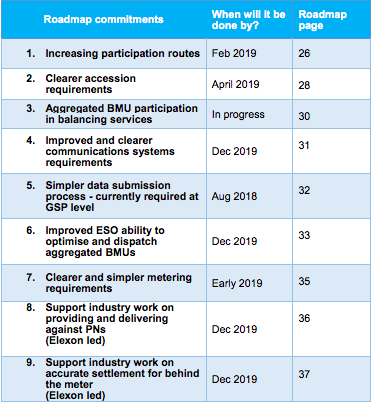 National Grid has published a roadmap to enable all those with flexibility to sell it into the Balancing Mechanism, a key tool in balancing supply and demand close to real time.
National Grid has published a roadmap to enable all those with flexibility to sell it into the Balancing Mechanism, a key tool in balancing supply and demand close to real time.
Participants in the Balancing Mechanism (BM) offer flexibility by altering generation and/or consumption of their assets, or those that they manage on behalf of other parties. They bid in flexibility to half hour settlement periods and National Grid pays for what it needs to keep the system balanced.
That differs to ancillary services, where National Grid currently contracts flexibility much earlier, often fixed prices and services for set durations. It is also a deeper market, offering greater opportunity for those that can respond on a within-day basis to earn money for their flexibility.
The ‘ultimate flex market’
Described by National Grid as “the ultimate flexibility market”, the BM is worth upwards of £350m a year to participants, but may grow substantially over the coming years as more renewable and distributed generation comes onto the system, and large centralised plant retires.
Currently, the Balancing Mechanism (BM) is largely the preserve of licenced energy suppliers and transmission connected generation (there are means for distribution connected generation to participate, though the volume currently doing so is very small).
Aggregators without a supply licence cannot directly participate, which is why some, such as Limejump, and more recently, Flexitricity, have acquired supply licences.
Price erosion
As ancillary markets become more competitive, prices paid for services inevitably fall, with firm frequency response (FFR) the most recent example of price erosion, following the collapse of short term operating reserve (STOR) prices some years ago.
That means flexibility providers need to look for additional sources of revenue – as do small, distributed generators, whose revenues are being cut through several recent regulatory changes.
For National Grid, the imperative is to ensure it has access to all available flexibility, enabling greater competition and liquidity, and therefore reducing costs to consumers.
Project Terre
At the same time, National Grid must enable access and participation within a cross-boarder flexibility market called Trans European Replacement Reserve Exchange, or Project Terre by the end of 2019.
The aim is to ensure all sources of flex can bid into both markets on an equal footing by that time.
There are several strands of work that need to be aligned across wider BM access and Project Terre. These include better communications and dispatch systems, simpler data and metering requirements and accurate settlement behind the meter.
Most of that work is in progress, and National Grid outlines delivery timetables for each aspect within the document, available here.
Do you provide DSR? If so, tell us what works, and what doesn’t. If not, tell us why. Give us your views via this 5 minute survey for our forthcoming DSR and Storage reports.
Related stories:
Flexitricity aims for supply licence, eyes BM prize
Limejump: Aggregators will need a supply licence to survive
Click here to see if you qualify for a free subscription to the print magazine, or to renew.
Follow us at @EnergystMedia. For regular bulletins, sign up for the free newsletter.



